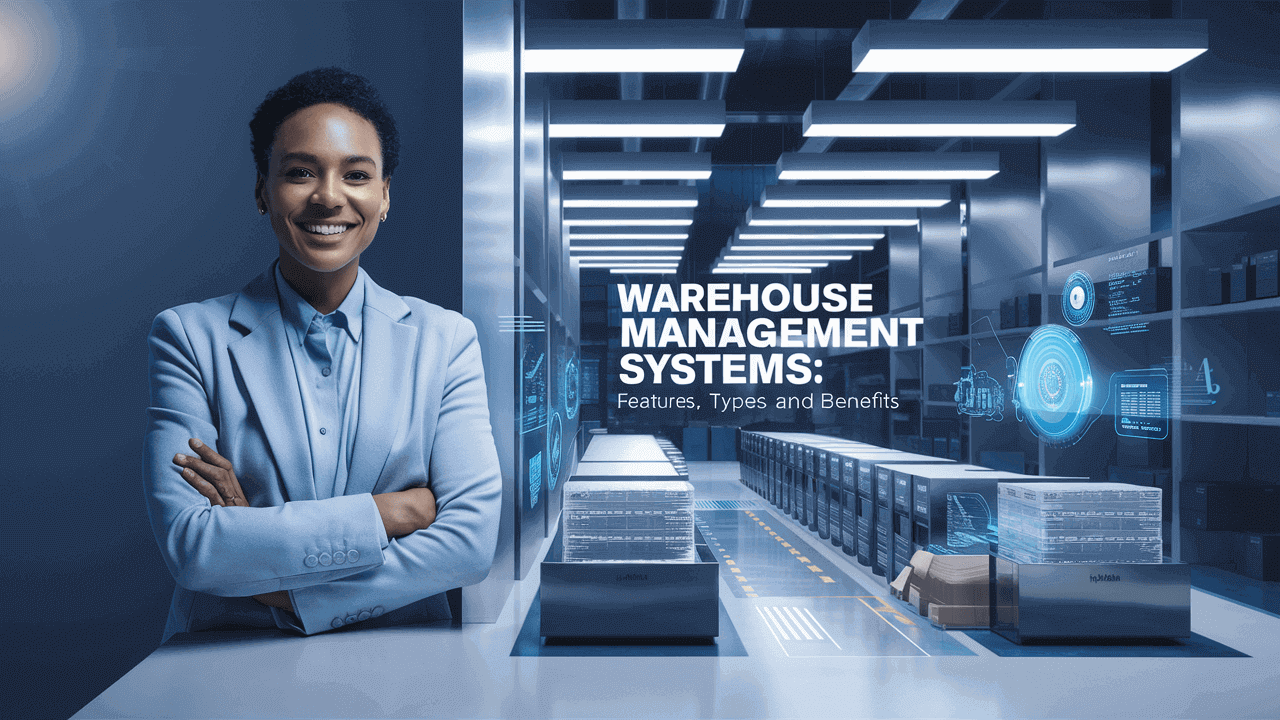Imagine an organization stuck in a loop of decreasing excitement and halted innovation. It is where very little to no change takes place. Lean leadership turns this situation around by creating an environment where employees feel empowered and continue learning and purposefully collaborating. It allows the leaders to motivate the staff, tear down boundaries, and create tolerance. However, it does so by aligning individuals and processes to make this progress last through command. This way of leading answers the most important question that most managers wrestle with: how to keep the change going in the presence of complexities and resistance.

Jump ahead to
Defining Lean Leadership: Beyond Mere Management
Lean leadership does not limit itself to the traditional lean management’s main concern of control and hierarchy. Rather, it prioritizes people and sets continuous improvement as an organization’s core value. Leaders come into the organization as coaches and facilitators, making an atmosphere where employees at all levels feel respected and entitled to try out and tackle problems. This adjustment of the role from command-and-control supervision to letting the flow go through, taking away the hurdles, and fostering accountability has been a step forward. Lean leaders nurture the qualities of flexibility, openness in communication, and collaboration that are both proactive and crisis-based. Thus, driving the sustainable value of the organization.
Who Developed the Lean Model of Leadership?
The concept of lean leadership can be traced back to the revolutionary Toyota Production System, which was developed in Japan after the war, when resources were limited but innovation was a must. Taiichi Ohno and Eiji Toyoda created a model that redefined productivity by applying the most effective waste elimination with respect for individuals. Their thinking empowered the factory workers to be the problem solvers. Additionally, it challenged the top-down, assembly-line thinking that was the norm in mass production. The ideas gained global popularity through the contribution of thought leaders such as James Womack and Daniel Jo, who translated this operational success into a universal leadership philosophy. Further, it was applicable across industries and contexts.
What Is Lean Agile Leadership?
The Lean Agile Model of Leadership merges the Lean principle and the Agile approach. Lean has the main point of committing to maximum efficiency and eliminating waste. Whereas, Agile is flexible and focuses on learning through iteration. This model will make it possible for companies to take decisions in a decentralized way by giving the teams the power to test, learn quickly and change according to evolving customer needs. The leaders create an environment of trust and safety where team members can take risks without the fear of losing their jobs. Thus the process of rapid innovation is supported together with alignment and discipline. They also show how to adapt and be resilient in their actions. Moreover, motivating teams to be this way and to constantly adapt the process to deliver the highest possible value to customers.
Lean Leadership Principles That Drive Real Change
Continuous Improvement (Kaizen)
Lean leaders are responsible for the daily culture that is built around the unending quest for small improvements. It will eventually add up to effective results. Every team member is encouraged to point out the areas that need improvement and suggest changes, which in turn will create momentum. Further, unleash the imagination and make the problem-solving activities very robust. Companies that are engaged in this never-ending evolution become agile entities which are able to survive and thrive in the changing environment.
Respect for People
Lean leadership is characterized by profound respect for the expertise, creativity, and dignity of individuals. The leaders assign the role of the professional to the employees, empower them to make decisions independently, and create an environment of collaboration where each contribution is valuable. This kind of atmosphere increases the employees’ commitment. Additionally, it creates a shared commitment to the objectives that are beyond just the employee’s willingness to follow orders from management.
Customer Centricity
Lean leaders align activities with the customers’ perceived value very closely. Hence, there is a guarantee that all efforts will lead to the improvement of quality and customer satisfaction in every service. The feedback from the customers is integrated into the company processes in real-time. This is done so that the organization can adjust quickly and be responsive. Thereby turning customer insights into immediate action.
Gemba (Go to the Source)
In the lean way, an organization’s top has to go down to the bottom and personally see where value is created. Through this process the leaders get a good grasp of the problems, and the workers can together come up with solutions and test their theories. Moreover, it gives rise to trust and a united direction.
Fact-Based Decision Making
Making decisions that are based on precise, honest, and clear data minimizes risks. Additionally, it makes the focus sharper on those improvements that really matter. The picture of the week’s performance and the report both serve as the same ground for team members to evaluate the progress together and to collaboratively change the strategy.
Problem Solving
By the use of structured techniques like A3 thinking and PDCA cycles, lean leadership comes to the core of the issues and does not stop at the surface-level fixes. Problem-solving is not only inclusive but also invites diversification of ideas. Furthermore, it ensures that the solutions are sustainable and effective, and universally accepted.
Teamwork and Collaboration
Lean cultures that are strong cut the barriers between different departments. They empower lively and spontaneous inter-departmental cooperation. The union of the various teams leads to richer and quicker ways of dealing with the issues. This accelerates the thinking process and contributes to the building of accountability since the uniting values are the same for all the contributors.
Standard Work
The use of standardized methods creates a firm foundation for the continuous improvement process to grow. Lean leaders constantly improve their practices. Thus, it retains the same level of consistency in the operations and boosts innovations. Moreover, it guarantees that the improvements will be both replicable and scalable.
The Three Dimensions of Lean-Agile Leadership
Lean-agile leadership is three-dimensional. The dimensions are tightly interconnected:
- Leading by Example: The lean-agile challenging success leaders represent the openness, resilience, and adaptability traits. The daily activities that are in harmony with the principles win the trust and further encourage the teams to set these standards for their own work.
- Mindset and Principles: The universally adopted lean-agile mindset that endorses such values as continuous improvement, respect, and customer-focused value creation prevails among all levels. Leaders actively propagate these principles. They bring about the harmonization of strategies and the shaping of culture in favor of agility.
- Leading Change: The lean-agile leadership lies at the very front of cultural and operational transformation. Leaders connect with teams on the emotional level to help them to be the resistors to the new ways of working, to safe environments for transition, and to the prolongation of improvements by means of continued support and reinforcement.
Lean Leaders vs. Traditional Managers: What Separates Them?
Lean leaders give away power. Moreover, enabling those who are nearest to the work process to decide and come up with innovations. Traditional managers usually centralize control. They see employees as creative allies. Additionally, fostering a problem-solving culture that goes thoroughly to the bottom of the issue. Traditional management is often top-down, with its solutions and is quick-fix-oriented. Thus, possibly missing out on the opportunity for a sustainable improvement. A logistics facility that underwent modernization after the transition from a command-and-control to a lean leadership approach involved the workers in daily cooperative problem-solving. Therefore, leading to the elimination of bottlenecks and the rejuvenation of employee engagement.
Essential Lean Leader Skills
- Critical Thinking and Problem-Solving: Leaders dig deep for the actual reasons. They create a questioning culture in which the continuous spotting of opportunities is encouraged.
- Communication and Influence: The partnership of visual tools with transparency and clarity forms unity. It speeds up the abilities of organization to respond.
- Coaching and Development: A company that invests in its people transforms its management into mentors and creates the future leaders.
- Adaptability and Flexibility: Eventually, leaders who accept change as their constant push the boundaries of creativity and quickly change their minds about their strategies.
- Empathy and Respect: In a respectful environment, psychological safety becomes a reality and, consequently, the team becomes innovative and trusts each other more.
What Is Lean Agile Leadership?
Lean agile leadership merges the efficiency goals of lean with agile’s quick responsiveness and the team’s autonomy. The process allows different skill groups to team up, organize themselves while still delivering the value that customers want. Leaders are there to support the teams and not to monitor their every move. They ensure that quality is not compromised during the lean and agile process and that the organization is always flexible and ready to change.
Lean leader responsibilities involve:
- Lean leaders are responsible for the continuous improvement through kaizen events and also using visual management systems.
- Besides, they work on standard work along with the teams.
- The participation in the gemba walks takes communication and operational results to a new level.
- This happens by tearing down the barriers.
- The coaching method is used instead of the controlling one.
- Thus, teams taking the responsibility for the results are the empowered ones.
Final Thoughts
Lean leadership equips organizations to stay resilient and responsive. It shifts leadership focus from authority to empowerment. It encourages proactive problem-solving and a strong sense of ownership within teams. Moreover, by building a culture of openness and continuous learning, leaders create an environment where ideas grow into lasting improvements. Lean leaders drive measurable progress. They enhance collaboration and sustain long-term improvement. Professionals aiming to master these capabilities can enroll in Lean Leaders Certification. This certification is designed to develop the strategic mindset and practical skills needed for advancing organizational excellence.
FAQs
1. What defines Lean Leadership in an organization?
It focuses on empowering people. Further, it drives continuous improvement, eliminates waste while maintaining respect for individuals and teamwork.
2. How do Lean Leaders differ from traditional managers?
Lean Leaders coach and facilitate. It helps employee autonomy, while traditional managers rely on control and directive supervision.
3. Why is continuous improvement vital in Lean Leadership?
Small, consistent enhancements compound into long-term efficiency and innovation across all functions.
4. What role does “Respect for People” play in Lean Leadership?
Trust and collaboration develop when employees’ input, creativity, and ownership in decision-making are valued.
5. How does Lean Leadership support customer-centric operations?
Processes align with customer value streams to ensure faster response to feedback and improve satisfaction.
6. What is the connection between Lean and Agile leadership?
Lean-Agile leadership blends efficiency and adaptability to create autonomous, high-performing teams capable of quick iteration.
7. What practical techniques do Lean Leaders use?
Principles such as Gemba walks, Kaizen workshops, A3 problem-solving, and standardized work methods are applied.
8. How does coaching replace control in Lean Leadership?
Leaders mentor employees to solve problems independently. Moreover, fostering accountability and intrinsic motivation.
9. Which skills are most critical for Lean Leaders?
Skills include empathy, adaptability, analytical thinking, clear communication, and strategic problem-solving.
10. How can professionals develop Lean Leadership capabilities?
Lean Leaders Certification enhances strategic insight, practical application, and a continuous improvement culture.



